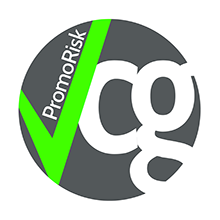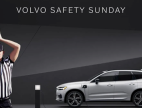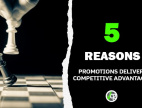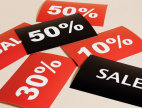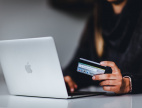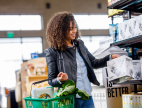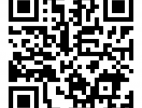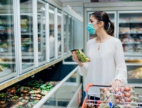Can brand owners afford to pause promoting their products in grocery?
23 Jun 2020
Will behavioural changes forced upon us during the 2020 Covid pandemic become new behaviours or will we quickly rebound to what we knew before? Will the way we will consume media change the path to purchase? How will changes to how we shop affect time spent browsing? How do recessions and uncertainty change purchase and consumption habits? Can brands afford to pause promoting? Can promotional marketing decisions be made with any certainty? So many questions…
Reduced choice drives brand and product switching
Looking back to March and April and recalling stockpiling, panic buying and empty shelves, many brands had what looked like a high-end problem on their hands – they simply couldn’t supply enough product quickly enough.
But lack of availability has forced consumers to shop out of repertoire. Own-label consumers have trialled branded alternatives. Brand consumers have trialled other brands. Many will have discovered new brand preferences. Many will have decided the differences within category are not big enough to warrant any loyalty.
Record sales during lockdown will not stay at that level
Pre-lockdown, 30% of meals were eaten out of home. We might suggest that 30% of toilet breaks might have been taken out of home as well. Domestic food, drink and toilet paper sales were never better as no-one was going out. Sales-driving brand promotion wasn’t necessary.
Post-lockdown, as we emerge from the enforced hibernation, we will be out of home more and consuming less at home. Demand will drop.
Brand and shopping habits change in times of uncertainty
In times of uncertainty, we retreat to what we feel comfortable with – maybe even to what we fondly remember from the past. It’s no wonder that Premier Foods, which owns the kitchen stalwarts Mr Kipling, Oxo, Bisto, Birds Custard and Batchelors, has seen its share price almost double since the end of February. This doesn’t just reflect recent cupboard-stocking habits but an acknowledgement of longer-term changes in brand preferences.
During recessions, consumers hunt out value and that behaviour stays in place long after recovery. We at VCG PromoRisk saw a marked increase in coupon redemption rates and offer claim rates during and after the 2008 crash. And this applies to everyone – even Waitrose shoppers.
We are entering an extraordinary (post-Brexit) recessionary time with potentially eye-watering levels of unemployment. Over a quarter of the working population is currently furloughed and many of these (primarily younger) workers won’t be going back to work this year. Less well-off families have used up any savings and are increasing personal borrowing levels. Consumers will be hunting out deals and added value offers more than ever.
Changes to media consumption have affected the shopper marketing journey
The path to purchase might have normally included a mix of social/digital, ATL, outdoor and in-store media. Strip a load of that away for now. Outdoor needs full pavements. Cinemas need bums on seats. Commuter press needs commuters. In-store media and POS need retailer support. With uncertainty comes the risk of wasted marketing spend.
Multibuy and discount deals have traditionally driven quick purchase decisions at fixture. Retailers significantly reduced the number of these offers (the main reason why grocery prices have risen by 3% over the lockdown period). The retailer appetite to reactivate the calendar of trading deals will take time to come back.
At-shelf decisions need consideration time and even a willingness to pick up packs to read brand messages or ingredient lists. Even as social distancing measures are gradually lifted, supermarkets are not the place to hang around in when you do your one weekly shop.
Challenging cautious inertia
Lockdown sales peaks will not continue forever now we are gradually emerging from our homes. Brand owners can’t rely on pre-Covid brand loyalties and pricing acceptance.
Brands now have a choice – to hold back on any brand support decisions until the rules for the new normal are established or to recognise the risks of choosing to do nothing and act.
Steven Levitt, the University of Chicago economist who co-authored the book Freakonomics, identified that with important personal decisions (e.g. leaving jobs, leaving partners) we tend to lean towards the option that does not involve change rather than the one that is uncertain. He created an online coin-toss function that would make the decision on the person’s behalf and then followed up with those people afterwards.
Almost without exception, people whose coin-toss encouraged them to make the decision to change were happier and more fulfilled than those whose coin-toss encouraged them not to act.
In the absence of certainty, maybe a decision to act rather than not act may well be the right one.
Promoting on-pack
The one medium that has remained unchanged in its impact to drive purchase decisions at point of purchase is the one that the brand owns – its on-pack canvas. A motivating and eye-catching on-pack offer will demand attention quickly at the moment that matters.
Many brands have pulled away from promotional activity during the crisis. But despite the challenges, a number of the big promoters including Pepsico, Mondelez, Coca Cola, Kingsmill, Kellogg’s, Mars, Nestle and RB have powered on with on-pack offers and competitions. We can interpret this as collective industry support for promoting on-pack ongoing.
And in a climate where increasingly cash-strapped consumers will be hunting for added value wherever they can find it, a strong on-pack promotion may now be one of the most compelling tools to drive purchase decisions available to a brand owner at the moment.
As on-pack messaging is laser-targeted, a brand owner can find comfort that strong and motivating messaging will be demanded, seen and the added-value will be embraced by the consumer.
Ed Gray, VCG The PromoRisk People, ed@vcgpromorisk.com
